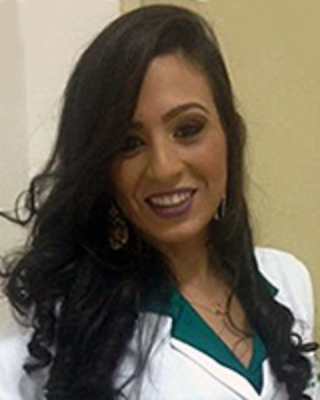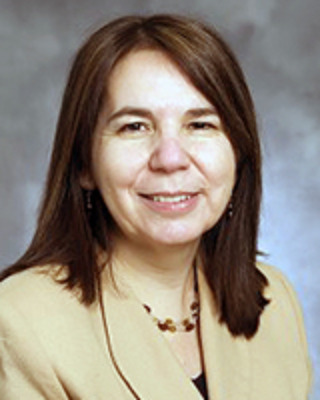Introduction
Water is crucial for food security and health. From domestic to industrial and agricultural use, water is fundamental in guaranteeing food security and the full realization of the human right to food1. Access to clean water prevents the appearance of pathologies such as diarrhea and other gastrointestinal infections2. Still, less than 40% of rural households in Brazil are connected to the water distribution network3, and access to drinking water is still incipient4,5. Some regions of Brazil suffer from environmental adversities that cause long periods of drought, a natural climatic phenomenon that makes access to water very difficult. This affects approximately 18% of the Brazilian population, equivalent to 38 million people, mainly distributed in the Northeast region. Drought has dire consequences for the region's economy, with crop losses and livestock deaths, food price inflation, and the reduction of farmers' income and purchasing power4,6,7.
For many years now, civil society organizations have been working with the government to develop strategies for addressing the issue of water scarcity and access in the Northeast region8-10. The idea has been to find ways of coexistence with the drought, seeking to offer better conditions of water access to families and to protect the economic activities of farmers during those periods11-13. Among the strategies adopted, rainwater harvesting has proven to be one of the simplest, most feasible and inexpensive ways to cope with water shortages, promoting practices of water storage for different uses such as human consumption, food production and to serve animals2,8,14-19. This technology guarantees a stock of water during periods of scarcity and provides the availability of this essential good for greater diversity of crops, and more variety of fruits and vegetables, favoring the food and nutrition security situation of families2,6,17,20. In the face of weather uncertainties due to climate change, this low-cost technology provides opportunities for resilience.
This article looks at one experience in Brazil with a rainwater harvesting program. In particular, it reports on the perceptions of farmers about the impact of the Boardwalk Cisterns program in their lives and their food security situation, in the north-eastern, semi-arid region of the country.
Cisterns Program in Brazil
In 1999, the Semi-arid Association (ASA) – a network of more than 3000 civil society organizations – launched the One Million Cisterns Program (P1MC), with the goal of building cisterns for the catchment and storage of rainwater for human consumption throughout Northeast Brazil21. In 2003, the Brazilian federal government, in collaboration with ASA, started the National Program to Support Rainwater Harvesting (Cisterns program) as part of its Zero Hunger strategy. The program aimed to increase access to water for human consumption and food production, as well as to promote local socioeconomic development, and to improve health conditions and the general wellbeing of people6,8,22,23. A study on the use of rainwater in the semi-arid region of the country observed a reduction in the prevalence of diarrheal diseases from 44.2% of households in 2013 to 37.9% in 20162.
The Cisterns program has three main parts:
- The First Water program was designed to provide water for household consumption, with a masonry reservoir built next to the family house and with the capacity to store 16 000 liters of rainwater captured through a pipe system installed on the roof. The rainwater stored in the cistern was estimated to serve a family of five people with enough water for drinking, cooking and personal hygiene in a drought period of approximately 8 months.
- The Second Water or Water for Production program provided cisterns with capacity of up to 52 000 liters of water to promote the production of food. These are called Boardwalk Cisterns (Cisternas Calçadão).
- The Cisterns in Schools program provides reservoirs of water for human consumption or for vegetable gardens in municipal public schools in rural areas, especially in the Brazilian semi-arid region8,9,24.
The Brazilian Cisterns program became one of the largest rainwater harvesting programs in the world. By the end of 2018, more than one million units were delivered by the federal government in partnership with states, municipalities and civil society organizations: over 870 000 cisterns of water for household consumption (First Water), 140 000 for food production (Second Water) and 4000 school tanks7,25. The program was internationally recognized with a second place in the 2017 International Policy for the Future Award from the World Future Council, in partnership with the United Nations Convention to Combat Desertification25.
Boardwalk Cisterns, the focus of the present study, are used primarily in food production (crop agriculture and animal welfare). An underground reservoir is linked to a ‘boardwalk’ acting as a catchment area for rainwater, which flows into the cistern through pipes26. When it is not raining, the boardwalk can be used to dry agricultural products such as beans and corn27 (Fig1). Each cistern requires an area of 200 m2 (10 m wide × 20 m long), with a slope greater than 3% to facilitate water flow into the reservoir. The cost of building each Boardwalk Cistern (on average between R$18,000 and R$20,000, or US$3000–$3500) includes the material for the construction of the equipment, expenses with a deployment team, and the training and qualification of families through the water management course for food production28,29.
The acceptability of this technology by the beneficiary population is fundamental for its effectiveness. The implementation of the program considers the mobilization and recruitment of beneficiary family members and local institutions, and training in the construction, maintenance (care and cleaning), and proper use of cisterns11,23,26,30. This training, crucial in establishing the safe use of rainwater, is based on participatory and popular education methodologies, which consider the opinions of beneficiary families and local institutions. The intention is for families to develop a sense of true ownership over the installed equipment. Eventually, however, the program's success depends on its contribution to participating families' wellbeing (including food security).
In order to be selected to participate in the Boardwalk Cisterns program, the family must have an estimated per capita family income of up to half a monthly minimum wage, and be enrolled in the Single Registry for Social Programs (CadÚnico – a social assistance registry in Brazil). Income is measured as monetary income, received from sales of agricultural products, occasional work and government transfer payments. Priority is given to households headed by women, families with children aged 0–6 years or children attending school, households with people aged 65 years and over, and households with people with physical or mental disabilities9.
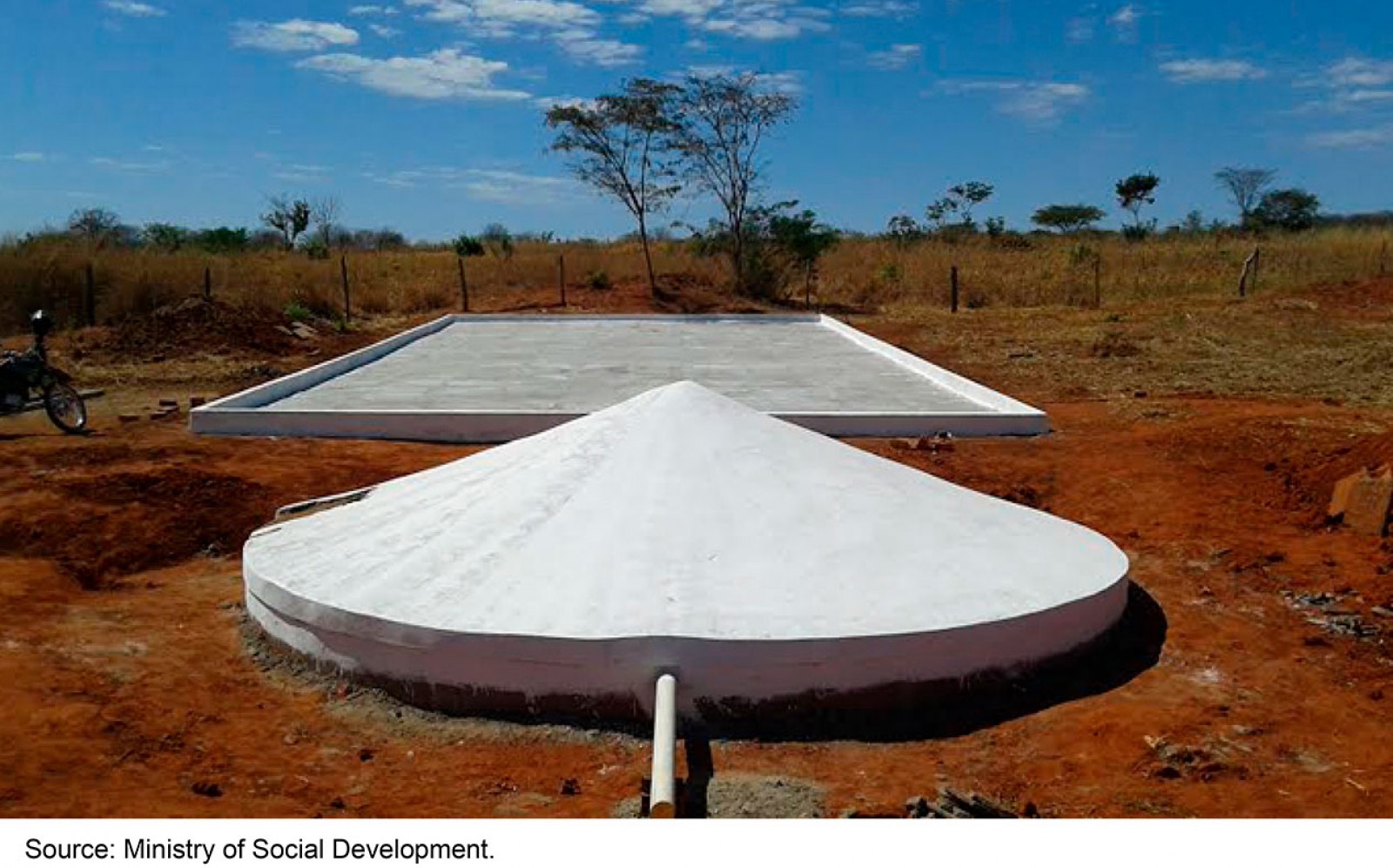 Figure 1: Model of a Boardwalk Cistern.
Figure 1: Model of a Boardwalk Cistern.
Methods
The study reported here is a piece of a broader project previously designed and conducted by the Brazilian Company of Agricultural Research (Embrapa), in partnership with the Association of Alternative Farmers of the Agreste region of the state of Alagoas. It proposed to assess farmers’ perceptions of the Boardwalk Cisterns program and its impact on their food security. Researchers expected that beneficiary farmers would have a positive view of the program based on an improved food security situation of their households.
The study analyzed data collected through a descriptive cross-sectional survey in 2016, after the implementation of the Boardwalk Cisterns program in the state. Research participants were farmers responsible for the households benefiting from the Cistern program in two municipalities, Craíbas and Igaci. Criteria for inclusion household in the research were to have participated in the initial survey of household conditions conducted by Embrapa in 2013, and to have received Boardwalk Cisterns between 2014 and 2015. This resulted in a sample of 30 households.
The questionnaire applied per residence included socioeconomic and demographic information, such as gender, age, monetary income and schooling of heads of household, as well as housing conditions (ie home ownership, access to electricity, living quarters), access to water, health conditions of the residents, questions regarding the conditions after the implementation of the program, and family agricultural production. The Brazilian Food Insecurity Scale3 was applied to diagnose the situation of food security of the households. Data were analyzed descriptively, using measures of central tendency and variability for quantitative variables, and distribution of simple and relative frequencies for categorical variables.
Beyond the survey, data for the analysis of the farmers' perceptions of 'cisterns' and ‘food security’ were collected through the Free Evocation Technique (EVOC), which consists of the presentation of a stimulus word for the respondents to designate what comes immediately to them29. Anchored in the Theory of Social Representation30,31, the evocation technique contributes to the understanding of how a group of people elaborate a certain reality and how they share the meanings of a social object. In this study, participants were asked to follow each stimulus word, ‘cisterns’ and ‘food security’, by four other words of their choice. The registration of these occurred according to the order in which they were evoked. The words were then typed in a spreadsheet and, after organization and standardization, the data were entered into the EVOC software (Ensemble of Programs Permettantl' Analyze des Évocations). The frequency (f) of each evoked term and the mean order of evocation were obtained. A cross-sectional analysis was performed between these two parameters, generating the four-quadrant table for each stimulus word, with interpretation of the probable central systems and peripheral systems of the Social Representation, according to Moscovici's theoretical reference32.
Ethics approval
This study was approved by the Research Ethics Committee at the Federal University of Sergipe (UFS), under Opinion No. 1.917.584. It followed the guidelines of Resolution No. 466/2012 of the National Health Council. All participants signed an Informed Consent Form (ICF) and the authorization for use of voice and image data.
Results
One member in 29 of the 30 eligible households in the sample was interviewed. The mean age of participants was 31 years (±19.0), and the majority of them were women (58.6%). The schooling profile indicates 82.7% of respondents with an incomplete elementary education, and 69.0% said they only barely knew how to read and write. Households were composed, on average, of four people, and 37.9% of the population studied had a monthly family monetary income lower than half a minimum wage salary per capita, an indication of extreme poverty (Table 1). Regarding housing, 89.7% of respondents owned their own house, 96.6% of the households had electric power, 82.8% had a bathroom, and 44.8% still had a sanitary trench. A total of 82.2% reported the remodeling and improvement of rooms such as bathrooms and kitchens as a consequence of having the cisterns (data not shown).
Over 44% of the households reported the head of the family as female. The large presence of female-headed households in the sample reflects the preference given to those households in the Cisterns Program. According to the National Survey by Household Sample of 2014, Brazil had more than doubled the number of female-headed households in 15 years3. In the Cisterns Program, women were not only direct beneficiaries, but they also gained responsibilities as members of local water committees, which were traditionally reserved for men, and collaborated in the creation of new spaces for social inclusion in water development9,16.
A total of 76.0% of respondents indicated cooking as the main use for the water from the individual cisterns (after the daily chlorination treatment). But agricultural production and animal husbandry were reported as the main economic activities, quoted by 88.4% of families. While only 6.9% could present a certification, 62.1% of respondents reported being engaged with organic agriculture, which these farmers understood as the absence of chemical inputs. The use of chemical pesticides was confirmed by 24.1% of the farmers surveyed. Corn, beans and cassava were the main food crops reported by the interviewees, with almost half of this production (48.3%) for their own consumption. Increases in income were indicated by 72.4% of the households. All respondents reported consuming better food (96.6%), and having greater (89.7%) and more diversified (96.6%) production. With the greater access to water from the cisterns, many households reported planting fruit trees, or medicinal and ornamental plants. Indeed, all participants stated that cisterns had a positive influence in the food security situation of their families.
EVOC confirmed the positive evaluation of the program by the beneficiaries. For the term 'cistern' the farmers evoked a total of 86 words (some respondents were not able to come up with four associated words), 50 of which were different. For the term 'food security’, the results evidenced the evocation of 63 words, of which 38 were different, pointing to a lower familiarity of the participants with that term.
Table 2 refers to the discursive productions for the term 'cistern'. The first quadrant (upper left) represents the elements most frequently and immediately evoked by the subjects, that is, those that are part of a probable central nucleus29 of the social representation of the studied population. In this quadrant, the words ‘water', ‘good thing’ and ‘life’ appear, positively characterizing the beneficiaries' feelings about the cistern. 'Water' appears as a more cited element, corroborating the idea of %u200B%u200Bits importance in the life of farmers, especially the residents in Agreste and the Brazilian semi-arid region. This component was the most readily evoked, which indicates that its memory has less cognitive control and, consequently, presents itself as more spontaneous and projective. In the second and the fourth quadrants are the words that once again point out the positive aspects brought by 'cisterns' in the farmers' view, but also words that represent the different ways of using this water resource by the population33,34.
Table 3 presents the analysis of the words evoked in response to the term 'food and nutritional security'. Many participants failed to evoke the four words requested. In the first quadrant, the words 'without poison', 'water', 'healthy food', 'improvement' and 'food production' were invoked, which corroborates how the concept has been officially adopted in Brazil28:
Food and Nutritional Security as ‘the realization of the human right to regular and permanent access to good quality food, in sufficient quantity, without compromising the fulfillment of other basic needs, having as its basis healthy eating habits that respect cultural diversity and that are environmentally, culturally, economically and socially sustainable28.
The presence of the expression 'health' in the second quadrant corroborates the central nucleus results (represented in the first quadrant). The words 'food', 'to plant' and 'better life', in the third quadrant, characterized by lower evocation frequency, are also intrinsically related to the requested concept. In the fourth quadrant, which represents a more individual view, the terms 'cistern', 'healthy planting', 'quality' and 'vegetables' are presented. Overall, it is clear that the social representation of 'cisterns' and 'food security' refers to positive situations in the lives of these farmers.
Table 1: Sociodemographic characterization of respondents (n=29)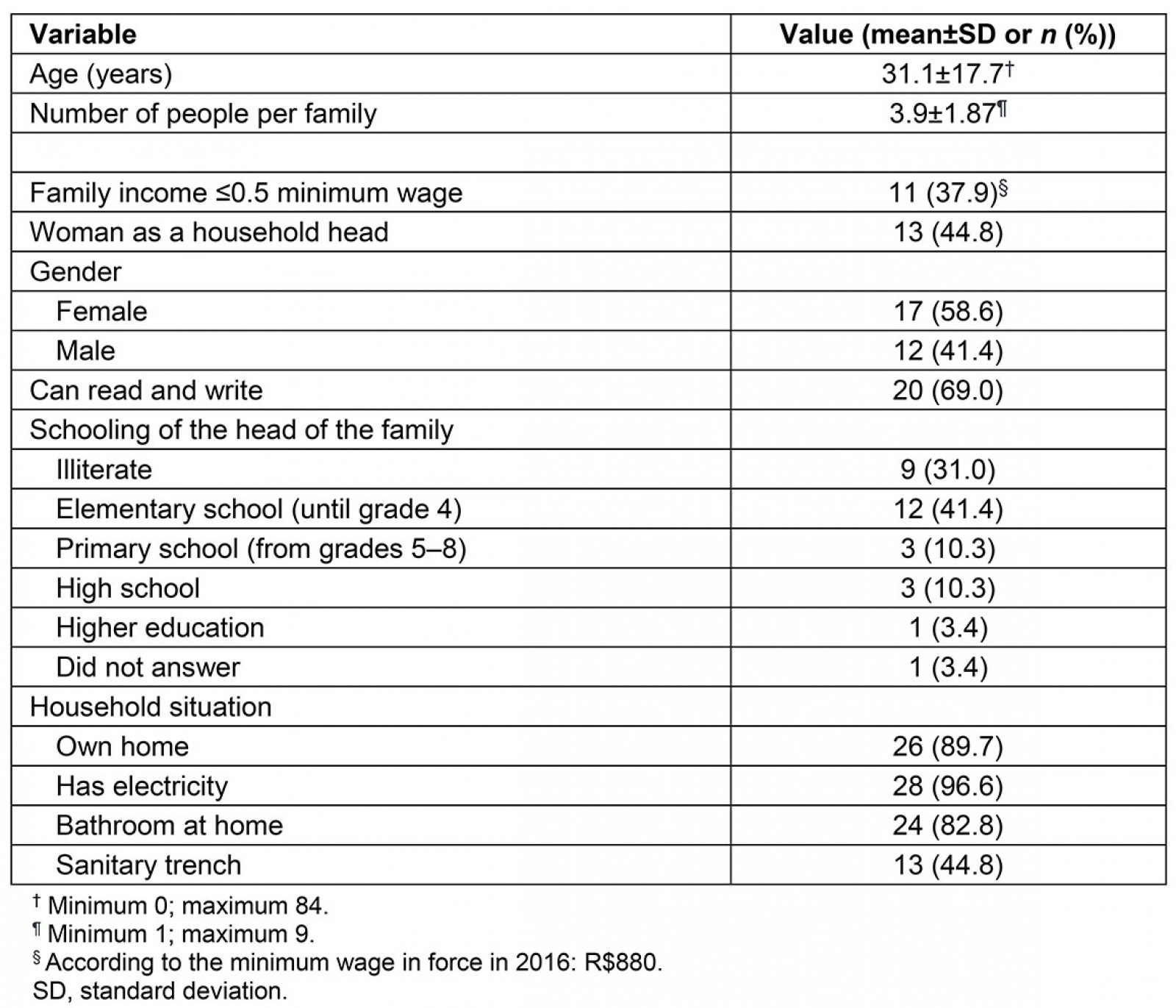
Table 2: The four quadrants of respondent words evoked in response to the term of association ‘cistern’ (n=29)†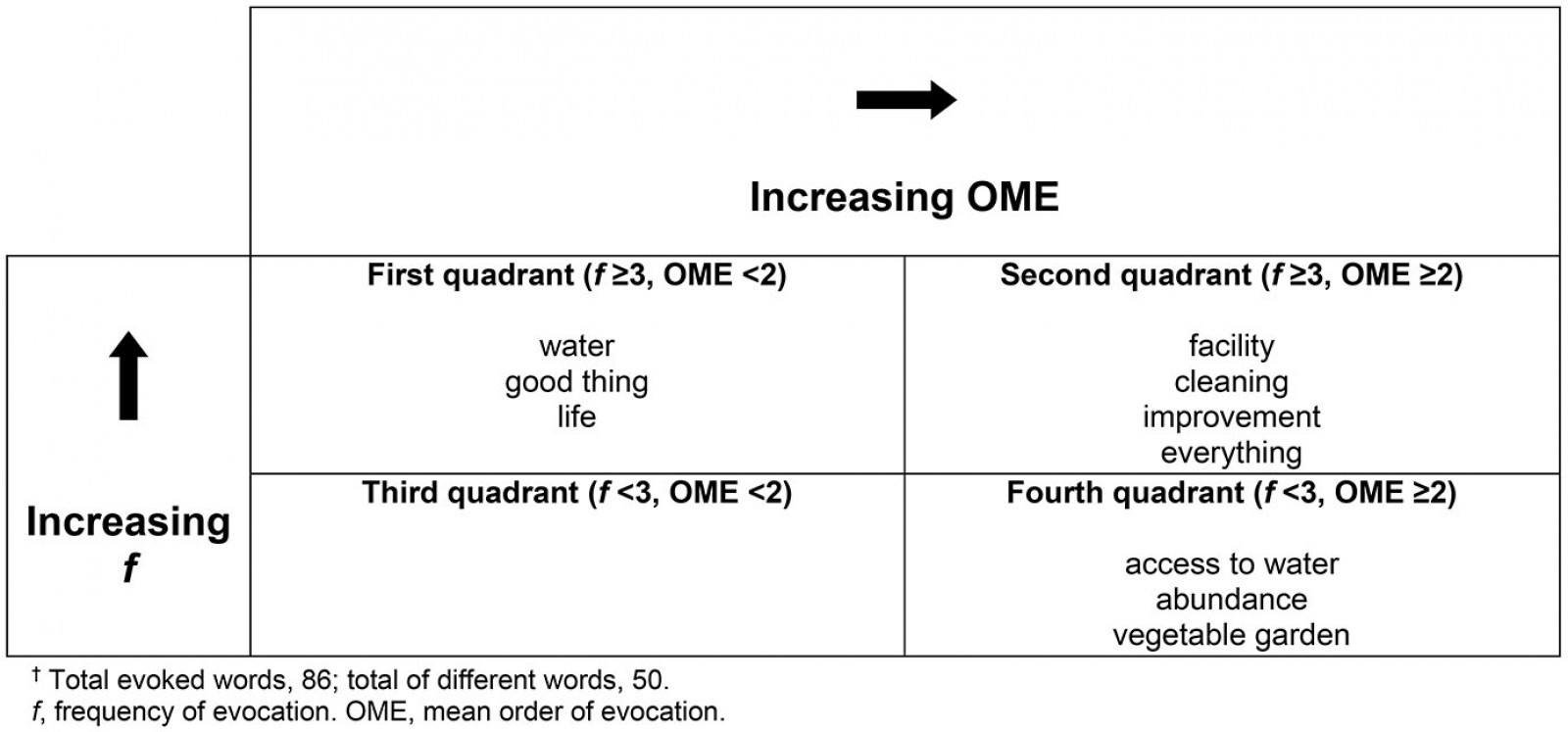
Table 3: The four quadrants of respondent words evoked in response to the term of association ‘food and nutritional security’ (n=29)†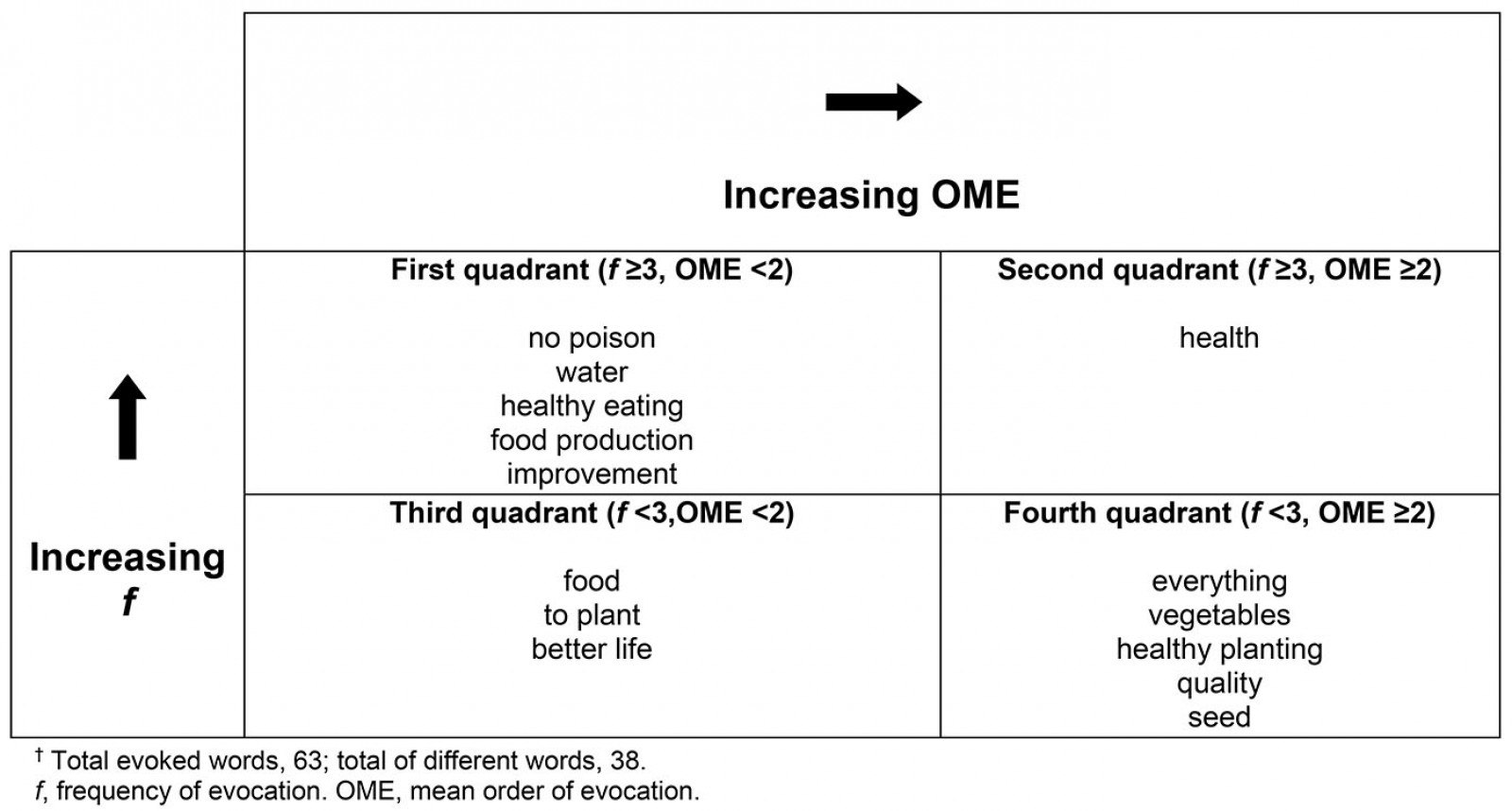
Discussion
Despite improvements in food security indicated by greater access to water, higher incomes, and greater quantities and variety of food consumed, research data (Brazilian Food Insecurity Scale instrument) indicated that 79.1% of the households were still food insecure: 28.1% with mild food insecurity, 26.0% with moderate food insecurity and 25.0% with severe food insecurity (quantitative reduction and/or disruption in eating patterns due to lack of food among adults and/or children, and/or periods of hunger)3. The high incidence of food insecurity among this population is somewhat surprising given that they are beneficiaries of other social programs beyond the Boardwalk Cisterns. The majority of the population studied (72.0%) had income from programs such as the Family Grant transfers (Bolsa Familia), and more than 95.0% reported having access to credit, mainly through the National Program for Strengthening Family Farming. Conversely, only 10.3% of the population reported selling food produced to other government programs, such as the Food Acquisition Program and the National School Feeding Program.
Conclusion
The aim of the present study was to report on the perception of family farmers on results from the implementation of the Boardwalk Cisterns Program in two municipalities of Alagoas state in Northeast Brazil. Researchers expected that beneficiary farmers would have a positive view of the program based on an improved food security situation of their households. EVOC was used to ascertain farmers’ perceptions of the impact of the program, and the Brazilian Food Insecurity Scale was applied to diagnose the situation of food security in the households surveyed.
Given its relatively small sample size, the study has a qualitative, exploratory character, indicating the desirability of further research on this topic. Another limitation of the study is that it was not able to make a comparison between the prevalence of food insecurity before and after the implementation of the Cisterns program, since the baseline information was not collected before the introduction of the Boardwalk Cisterns in the two communities. In future studies, it would be desirable to have preliminary measurements of both food and water insecurity among populations in communities being contemplated for the implementation of these programs. This would provide a more solid basis for a better evaluation study. Future studies could also consider data indicating wellbeing beyond food security, such as quality of life and women’s empowerment.
Results from this study, however, show a very positive perception of the farmers in regards to the use of the cisterns. Indeed, the target population benefitted from the Boardwalk Cisterns program in many ways, such as with greater incomes (due to increased production for market sales) and improvements in health through greater access to clean water and greater consumption of a variety of foods. While all of these results indicate greater food security, for the majority of the families this was not enough to raise them beyond the food insecure status as measured by the Brazilian Food Insecurity Scale. The authors conclude then that, while the Boardwalk Cisterns program reduced food insecurity and improved health among beneficiary families (very positive results), by itself it was not able to guarantee food security. This reflects the deep, extreme poverty that prevails in this region, and points out the urgency and necessity of maintaining and increasing the coverage of social programs for family farmers in Northeast Brazil. As envisioned in the original Zero Hunger strategy of 2003, greater water access is just one among many social and economic improvements needed for assuring food security. One area deserving of special attention, for example, is on improving conditions for these farmers to commercialize their products through greater public procurement market opportunities.
Unfortunately, in the past few years, the support for social programs in general, and for those geared to small family farmers in particular, has significantly declined. Despite the continuing high demand for all kinds of cisterns and general water access, the Cisterns program has suffered large budget cuts35. While it had a budget of R$643 million in 2014, it received only R$40.8 million in 201836. As result of both a period of economic downturn and a reversal of political priorities against social programs, food insecurity has been increasing again in Brazil, after a steady decline between 2003 and 2014.
Acknowledgement
The authors would like to thank the Brazilian Agricultural Research Company (Embrapa) for the opportunity to carry out the work and support; the Association of Alternative Farmers for the articulation, support and rich collaboration; and the participating families for their time.
